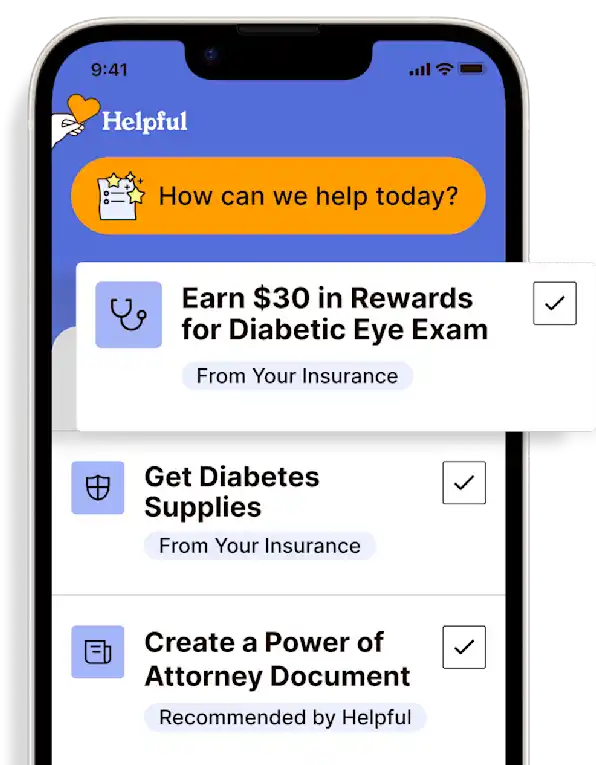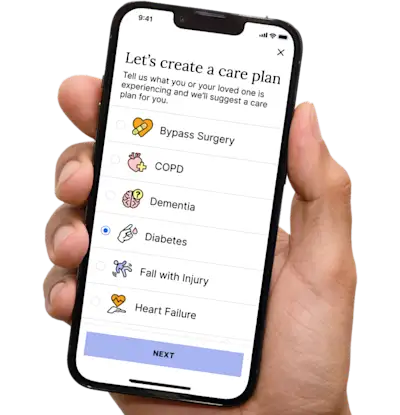Original Medicare (Parts A & B): Cardiovascular Behavioral Therapy
CVD is the #1 cause of death at a rate of 1 person every 34 seconds. Daily habits and actions profoundly determine whether CVD will develop.
Access all my benefitsGet insurance benefits, legal documents, and medical records in one place
How To Receive
Details on how to apply
Schedule a primary care provider appointment.
Request the appointment target CVD risk reduction.
Attend the appointment.
Engage in recommended follow-up treatment and/or referrals.
For more information on Medicare benefits and coverage, call 1-800-MEDICARE (1-800-633-4227) or visit the Medicare Benefits Website. TTY users, call 1-877-486-2048.
Get more support and guidance on insurance benefits, medical records and legal forms.
Helpful brings together your insurance benefits, legal documents, and medical records in one personalized place — so you always know what you have, and never have to search again.

Cardiovascular disease (specifically heart disease) is the #1 cause of death for men, women, and people of most racial and ethnic groups in the U.S. …And it is largely preventable. Where it isn’t preventable, it can be better managed. Cardiovascular disease occurs, in large part, because of modifiable risk factors such as diet, exercise, lifestyle choices (smoking, drinking, sleep, stress), blood pressure, and so forth. Of course, there are also factors we cannot change such as genetic/family history and age that increase the risk for cardiovascular disease. All the more important then, as we do age, that we make concerted efforts to adopt heart-healthy choices and maintain a heart-healthy lifestyle.
While making these changes is always easier said than done, the first step toward success is knowing precisely what these changes are and getting ideas on how to implement them into everyday life. We don’t know what we don’t know, and a provider can help with that. During a cardiovascular disease risk reduction visit, the provider will check blood pressure and educate on what the numbers mean and the impact they have. The provider may encourage taking blood pressure at home, recording them, and reporting back. The provider will provide tips on getting adequate activity/exercise, as well as heart-healthy eating, and may make a referral to a nutritionist, dietician, or a nurse specializing in health and wellness. If appropriate, a daily baby aspirin* may also be discussed.
This visit includes intensive behavioral therapy for cardiovascular disease and is separate and distinct from the annual wellness visit (see separate benefit for Annual Wellness Visit).
*A baby aspirin is an 83 mg dose of aspirin. Aspirin is a platelet aggregate inhibitor; it does not “thin” the blood but makes platelets slicker, so they don’t stick together (clot) as easily. Aspirin therapy is used to lower the risk of heart attack, stroke, and other blood flow problems in high-risk persons.
Technology for Health Tasks. Mental Health for the Tough Stuff.
Helpful connects your medical records, insurance, and caregiving tasks automatically. And when you need more than logistics, a therapist is here to guide you.
In-Network and Covered
For Individuals, Couples and Families
HIPAA Compliant, Data Stays Private


Healthcare Tasks Simplified

From syncing records to spotting drug interactions, Helpful does the heavy lifting, turning complex health info into clear tasks and showing you benefits you can actually use, giving you clarity and control over your care.

In-Network Mental Health

Our licensed therapists are here to support you and your loved ones through stress, burnout, and life’s hardest moments, with an inclusive, compassionate approach that works with most insurance plans.

Create Legal Documents

Plan ahead by creating will, trusts, advance directives and more, that ensure your wishes are honored in the event you can’t speak for yourself -with Helpful guiding you every step of the way.